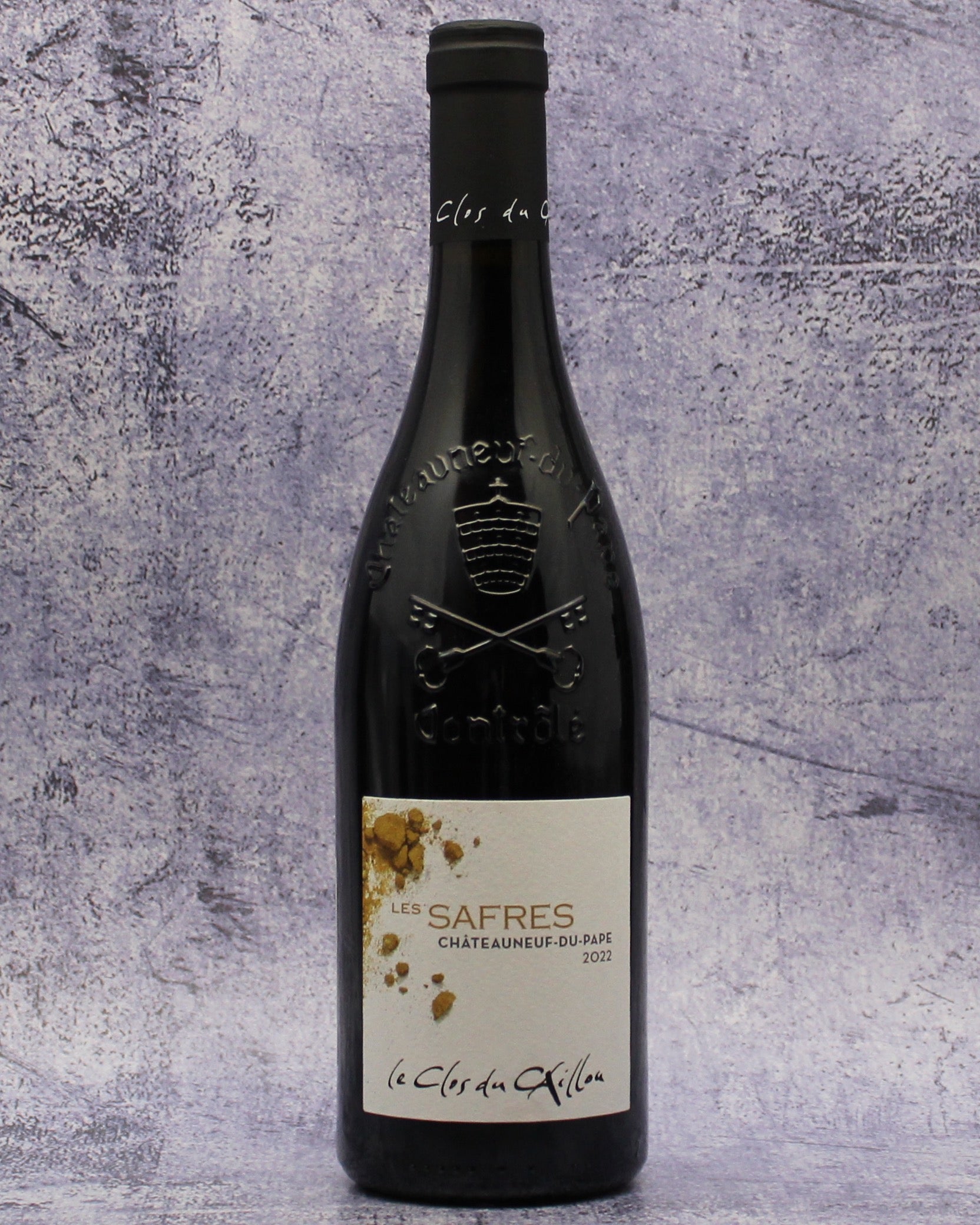Description
From: Châteauneuf-du-Pape, Southern Rhône, France
Varietals: 90% Grenache, 10% Mourvèdre
Tasting Notes: (From the producer): “This wine shows a ruby color with bright cherry reflections. The nose delivers delicate aromas of wild strawberry, Zan and griotte cherries. The palate is structured and incredibly elegant showing a terrific
freshness with notes of blackcurrant and licorice. The persistence of Les Safres is very long with very integrated tannins ending on a sensation of freshness giving to this wine a superb drinkability.”
Pairing: This elegant and fresh wine, with its vibrant cherry reflections and complex palate, pairs beautifully with various dishes, highlighting its fruit-forward notes and refined structure. A grilled tuna steak with Provençal vegetables seasoned with thyme and rosemary is a perfect match, as the herbal flavors complement the wine's delicate strawberry and cherry aromas. For a more exotic pairing, try a chicken tajine with lemon confit, where the bright citrus balances the wine's freshness.
Suckling lamb with ceps enhances the wine's structured tannins and earthy undertones for heartier options. At the same time, a pear and chocolate crisp dessert brings out the wine's subtle licorice and blackcurrant notes. Other great pairings include herb-crusted pork loin, which highlights the wine's delicate balance, or duck breast with cherry glaze, where the fruitiness of the dish complements the wine's griotte cherry character. For vegetarian options, consider a roasted vegetable tart with goat cheese, where the savory components enhance the wine's freshness, or try a grilled portobello mushroom stuffed with herbed breadcrumbs, where the savory, earthy flavors complement the wine's freshness and integrated tannins. This dish’s richness pairs well with the wine’s structured palate and bright fruit notes, making for a balanced and satisfying match.
Stuffed Portobello Mushrooms
By Molly O'Neill
About. In the late 19th and early 20th centuries, the French wine industry struggled to recover from the devastation caused by phylloxera, which wiped out millions of acres of vines. Chateauneuf-du-Pape faced significant issues with wine fraud and adulteration during this chaotic period. Pierre le Roy of Chateau Fortia spearheaded the establishment of regulatory standards, including rules on alcohol levels, yields, and grape varieties. This initiative eventually led to the Appellation d’Origine Contrôlée (AOC) system we know today.
An essential part of this regulatory effort was a detailed map of the Chateauneuf-du- Pape vineyards. When officials attempted to include Clos du Caillou on this map in 1936, the estate’s owner forcibly rejected them, resulting in a noticeable gap where Clos du Caillou should have been. Despite the estate’s subsequent inclusion in the Chateauneuf-du-Pape AOC, wines from this area, like their ‘La Reserve’ 2022, are still classified as ‘Cotes du Rhone.’ At a recent tasting, this wine stood out among Cotes du Rhone and rivaled many Chateauneuf-du-Papes, highlighting its exceptional quality and value. Given its rarity and the fact that it was not produced in 2021 due to frost, it remains a highly sought-after find. We have only a few cases available.
Wine Notes. The 2022 vintage is both seductive and full of promise for several reasons. It began with an unusually early, hot, and dry spring and summer, with just 96 mm of rain from January to August, a pattern similar to the famously dry 2003 vintage. Additionally, a hailstorm hit on August 14th, but fortunately, Clos du Caillou’s vineyard was mostly unaffected. What’s truly impressive is the resilience of the vines in handling such extreme weather, possibly aided by the vineyard’s biodynamic practices.
After the rain in mid-August, the mistral winds arrived, helping to preserve the health of the grapes, which were eventually harvested at their peak ripeness. The 2022 vintage is undoubtedly complex and requires precise timing regarding harvesting. Despite the warm conditions, the wines are exceptionally balanced, displaying vibrant colors and impressive concentration. This vintage brings to mind the balance and depth of the 2015 vintage and shows excellent aging potential. This wine blends 90% Grenache from vines planted in 1956 and 10% Mourvèdre. The combination of these two varieties creates a wine with depth and complexity. The grapes come from the "Les Bédines" plot, where the soils are sandy and composed of safres (compacted sand). These unique soil characteristics lend the wine a refined texture and soft, elegant tannins.
The grapes are hand-picked and carefully sorted in the vineyard and the cellar to ensure the highest quality. After de-stemming, the Grenache and Mourvèdre are co-fermented in concrete tanks using only wild, indigenous yeasts. During the 38-day maceration, pump-overs and delestage (rack and return) maximize flavor extraction and enhance the wine’s structure.
After fermentation, the wine is aged 14 months in large, 25-year-old foudres. This aging process in old oak barrels helps to develop complexity without overpowering the fruit, allowing the finesse of the terroir to shine through

